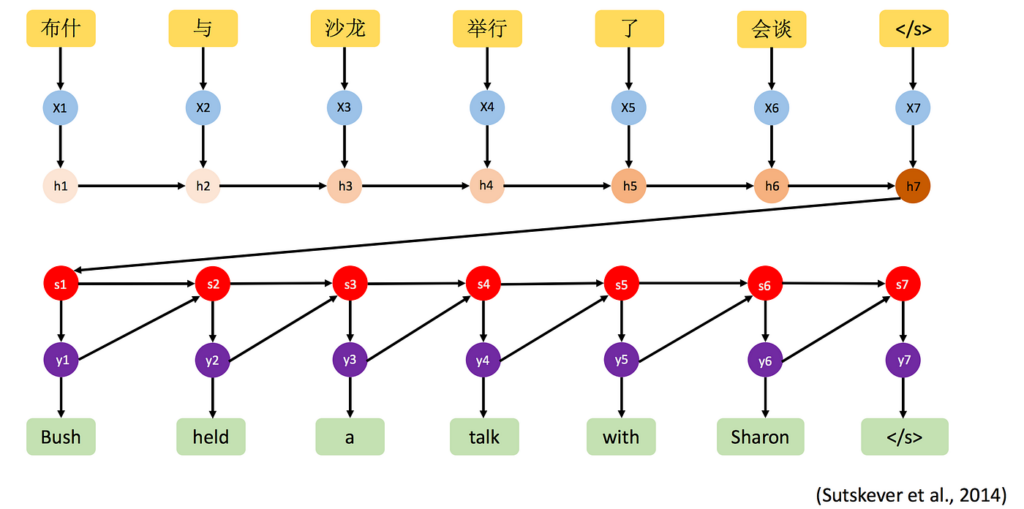The scope of global marketing has expanded greatly. When businesses try to reach international audiences, they encounter different languages, cultures, and barriers to communication. Machine translation (MT) is a transformative tool for companies in approaching business localization strategies, enabling them to overcome language barriers and effectively connect with diverse audiences worldwide
The international market is changing quickly, with companies of every size looking to access new markets worldwide. Nevertheless, this growth presents difficulties, particularly in effectively engaging with various audiences. This is when machine translation plays a crucial role in navigating the complex network of multilingual communication within the modern global business environment.
As businesses grow internationally, the demand for smooth and precise translation of marketing content, product details, and customer interactions becomes essential. In this ever-changing atmosphere, machine translation arises as a strong supporter, connecting languages and cultures to help establish significant connections with global customers.
Understanding Machine Translation
The primary idea behind machine translation is to utilize software for the automatic translation of text or speech between different languages. Machine translation software has experienced significant advancements, offering businesses valuable opportunities to overcome language obstacles and connect with audiences worldwide. Starting from basic word-for-word translations, It has evolved into a complex system that can effectively convey the nuances, nuances, and cultural nuances found within various languages.
Progress in AI, NLP, and deep learning algorithms has driven this change. Today, machine translation is seen as a sign of innovation in the realm of global communication, allowing businesses to efficiently convey their messages in different languages. MT keeps enhancing its capabilities, enabling businesses to confidently and effectively engage with global markets as it advances.

The Evolution of Machine Translation Technology
Early Days of Machine Translation:
In its nascent stages, machine translation (MT) embarked on a journey of exploration, relying on rule-based systems as its foundational pillar. These systems operated on predefined linguistic rules meticulously curated within dictionaries. Every translation was a product of these rigid rules, attempting to decipher the complexities of language through structured algorithms.


The Emergence of Statistical Machine Translation (SMT):
Nevertheless, the field of machine translation experienced a major change with the implementation of Statistical Machine Translation (SMT). This marked a pivotal moment, where translation decisions were no longer bound by the constraints of predefined rules alone. Instead, SMT brought forth the era of data-driven translation, harnessing the power of vast datasets to unravel language patterns and probabilities.
Presenting the Era of Neural Machine Translation (NMT):
Today, we are close to moving into a new stage in machine translation called Neural Machine Translation (NMT). It embodies the combination of machine learning and linguistic finesse, representing a significant technological advancement. Representing a quantum leap in technological advancement, NMT embodies the fusion of machine learning and linguistic finesse. Deep learning models now empower machines to not only translate words but to comprehend context, nuances, and intricacies of language usage.

The Intelligent Translator:
NMT algorithms, similar to the neural networks of the human brain, excel in extracting meaning from context and accurately representing the essence of language. This change has brought about a fresh era of precise and smooth translations, allowing companies to effectively communicate across different countries with a level of detail and clearness never experienced before.
A Symphony of Technology and Linguistics:
The evolution from rule-based systems to Statistical Machine Translation and finally, to Neural Machine Translation, represents a harmonious blend of technological prowess and linguistic understanding. What was once a rudimentary attempt at translation has now evolved into an intricate dance of algorithms, datasets, and linguistic nuances.
The Journey Continues:
As we delve deeper into machine translation, the process of evolution continues. With every progress made, we move nearer to the goal of achieving smooth, authentic language translations that go beyond boundaries and cultural differences. The age of Neural Machine Translation is evidence of the continuous effort to bridge linguistic divides in our interconnected world.

Benefits and Limitations in Marketing:
- Advantages: MT enables real-time translation, allowing marketers to engage with international audiences instantly.
- Challenges: While MT has made significant strides, nuances in language, context, and cultural sensitivity remain areas where human translation excels.
The Impact on Global Marketing Strategies
Real-Time Translation for Audience Reach:
- MT empowers businesses to create dynamic, real-time marketing campaigns that resonate with international audiences.
● Instant translation of websites, social media content, and marketing materials enhances engagement and customer experience.
Cultural Sensitivity and Localization:
- Successful global marketing hinges on understanding cultural nuances and preferences.
- MT tools now offer features for localization, tailoring content to specific regions without losing the brand’s essence.
Addressing Language Nuances:
- From idiomatic expressions to subtle language differences, MT algorithms are learning to preserve the original message’s intent.
- This ensures that marketing content maintains its impact across different languages and cultures.

Best Practices for Implementing Machine Translation
Integration into Marketing Workflows:
- Identify key touchpoints where MT can enhance communication, such as website translation, social media posts, and email campaigns.
- Create a seamless workflow that includes MT as part of the content creation and dissemination process.
Choosing the Right Tools:
- Evaluate machine translation services based on accuracy, language coverage, and compatibility with existing systems.
- Consider factors such as customization options, API integrations, and scalability for future growth.
Training and Education:
- Provide training to marketing teams on using MT tools effectively.
- Emphasize the importance of reviewing and editing machine-translated content for accuracy and cultural relevance.
SEO Optimization:
- Leverage MT for multilingual SEO strategies, ensuring that translated content ranks well in international search engines.
- Monitor keywords, metadata, and local search trends to refine MT-generated content for better visibility.

Future Trends and Predictions
Emerging Technologies:
- Continued advancements in NMT will lead to even more accurate and context-aware translations.
- Integration of AI-driven tools for sentiment analysis and personalized marketing content in multiple languages.
Global Marketing Landscape:
- With the widespread adoption of MT, businesses can expect to reach new markets with agility and precision.
- Customized, culturally sensitive marketing campaigns will become the norm, driving customer engagement and loyalty.
Expert Insights:
“The future of global marketing lies in the ability to speak the language of your audience, both linguistically and culturally. Machine translation is the key to unlocking this potential.” – Ofer Tirosh CEO of MachineTranslation.com by Tomedes.
Conclusion
In summary, machine translation has been a revolutionary tool for global marketing approaches. For businesses looking to expand globally, the importance of tools that can help bridge language gaps, enable instant communication and maintain cultural accuracy cannot be overstated.
Moving forward, the incorporation of machine translation in marketing processes will keep progressing, opening up opportunities for creative campaigns that connect with global audiences. By adopting machine translation, businesses can establish themselves as innovators in the ever-changing world of international marketing.
Discover the potential of machine translation for your business now. Overcome limitations, reach a worldwide audience, and transform your advertising tactics!
FAQs
- What is the role of machine translation in global marketing?
- Machine translation enables businesses to reach international audiences by translating marketing content across languages quickly and accurately.
- How does machine translation impact SEO for international websites?
- MT can enhance multilingual SEO efforts by providing translated content that aligns with local search trends and keywords.
- Can machine translation accurately convey cultural nuances in marketing content?
- While it has made significant progress, MT still requires human oversight to ensure cultural sensitivity and relevance.
- What are the best practices for using machine translation in multilingual campaigns?
- Integrate MT into marketing workflows, choose reliable tools, train teams on usage, and optimize content for SEO and cultural context.
- Are there any risks or challenges associated with relying on machine translation for marketing?
- Challenges include nuances in language, cultural sensitivity, and the need for human editing to ensure accuracy and effectiveness.

